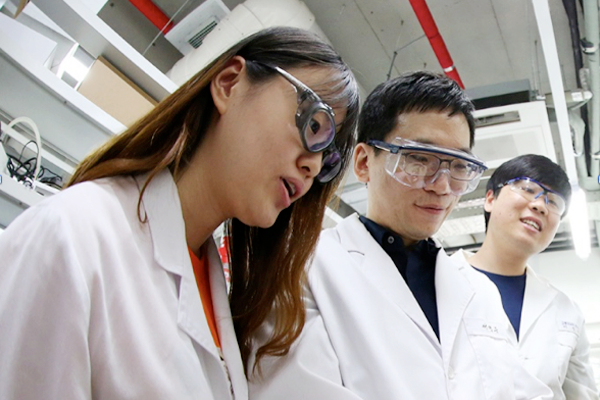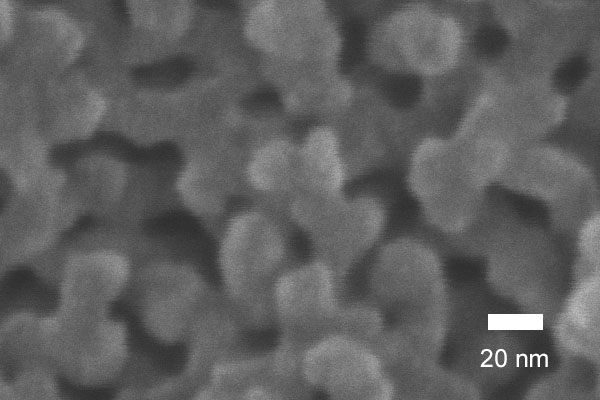Alternating copolymerization Battery Block polymer Bottlebrush polymer CCS polymer Composite Copolymer Cross-linking Emulsion Graft copolymer Hierarchical pore structure Hyper-cross-linking Interface Ionic liquid Macroporous Membrane Mesoporous Metal nanoparticle Micelles Microfluidics Microphase separation Microporous Mixed-matrix membrane MOF Noncovalent interaction Permselectivity Phase separation Phase transition Photopolymerization PIMS PISA Poly(arylene ether) Polycondensation Polymer particle Porous polymer Postpolymerization modification RAFT polymerization ROP Self-assembly Sequence control SNAr reaction Sulfonation Supramolecular chirality Surface modification Thiol-ene reaction
Polymer Synthesis

We synthesize polymers. We utilize controlled polymerization techniques to produce well-defined polymers. We combine different polymer chains and build up complex architectures, so the resulting nanostructured polymers can exhibit desired functions and properties that cannot be realized with simple polymer materials. We also take synthetic challenges and develop methodologies for polymer synthesis, by postpolymerization modification for instance.
Controlled polymer synthesisArchitecture controlCompartmentalizationPostpolymerization modification
Nanostructuring

We design nanostructure of our polymers when we synthesize them. In particular, we strongly exploit block polymer self-assembly that takes place in situ during polymerization. This synthetically feasible and scalable approach allows us to produce interesting nanomaterials with control morphology and length scale of the nanostructures. Synthesis of nanoporous materials and their applications for energy and environmental applications are actively sought.
Mesoporous polymerHierarchical pore structureSize-dependent transportMembrane applications
Project

Synthesis of Core Cross-Linked Star Polymers
Core cross-linked star (CCS) polymer consists of multiple arms tethered on the densely cross-linked core. The discrete core-shell structure of this spherical and hairy nanoobject is constructed via covalent bonds. We are exploring synthesis, compartmentalization, and functionalization of CCS polymers towards Janus functional nanoobjects useful for interfacial and catalytic applications.
January 3, 2021 | Current Projects

Hierarchically Porous Polymers Containing Multiscale Porosity
Constructing a hierarchy of pores spanning from micro- (< 2 nm) and meso- (2 - 50 nm) to macroporous (> 50 nm) length scales allows us to synergistically combine large surface area with fast material transport.
Hyper-cross-linking Porous polymer
July 10, 2018 | Current Projects

Selective Transport through Nanopores
Nanoporous polymers have promising applications such as filtration, separation, storage, and catalysis. Block polymer self-assembly provides a powerful route to well-defined nanoporous polymers with extraordinary control over pore size, structure, and functionality. We are exploring synthesis of block polymer-based nanoporous polymers and control of transport through nanopores by size for energy and catalytic applications.
Mixed-matrix membrane Permselectivity Porous polymer Surface modification
June 12, 2013 | Current Projects